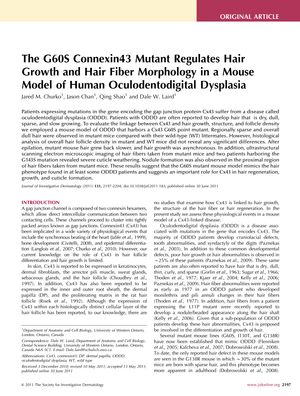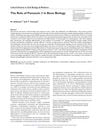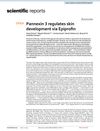The G60S Connexin43 Mutant Regulates Hair Growth and Hair Fiber Morphology in a Mouse Model of Human Oculodentodigital Dysplasia

TLDR The G60S Connexin43 mutation causes hair growth issues and poor hair quality in mice, similar to human ODDD patients.
Patients with oculodentodigital dysplasia (ODDD) often have hair that is dry, dull, sparse, and slow-growing due to mutations in the Cx43 gene. Using a mouse model with a Cx43 G60S point mutation, researchers observed similar hair issues, including regional sparseness and dullness, compared to wild-type (WT) mice. Despite no significant differences in overall hair follicle density between mutant and WT mice, mutant mice exhibited slower and asynchronous hair regrowth after epilation. Ultrastructural analysis showed severe cuticle weathering and nodule formation in hair fibers from mutant mice and two ODDD patients with the G143S mutation. These findings indicated that the G60S mutant mouse model replicated the hair phenotype of ODDD patients and highlighted the crucial role of Cx43 in hair regeneration, growth, and cuticle formation.



